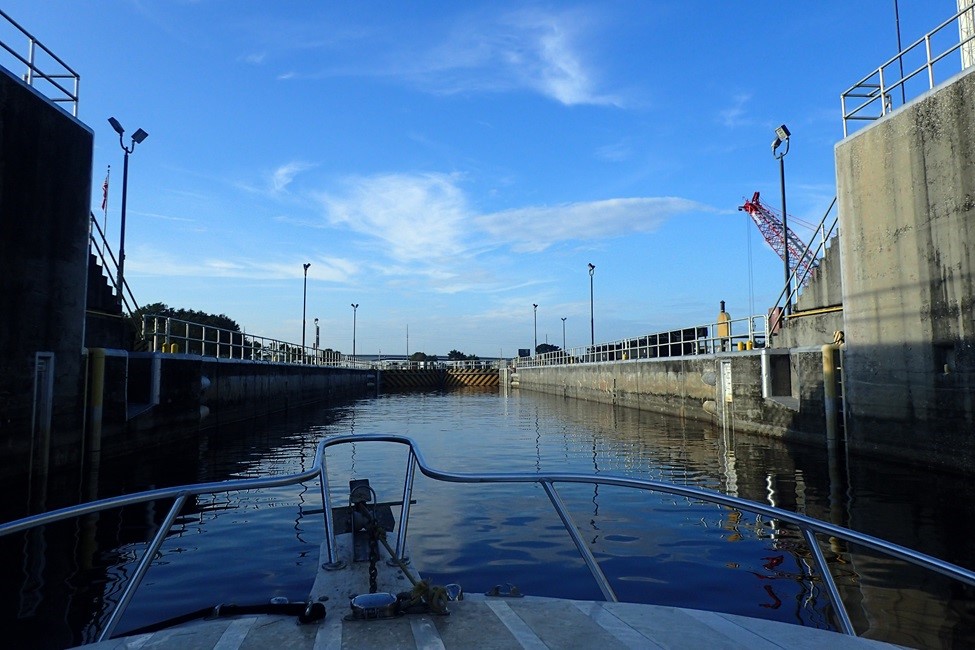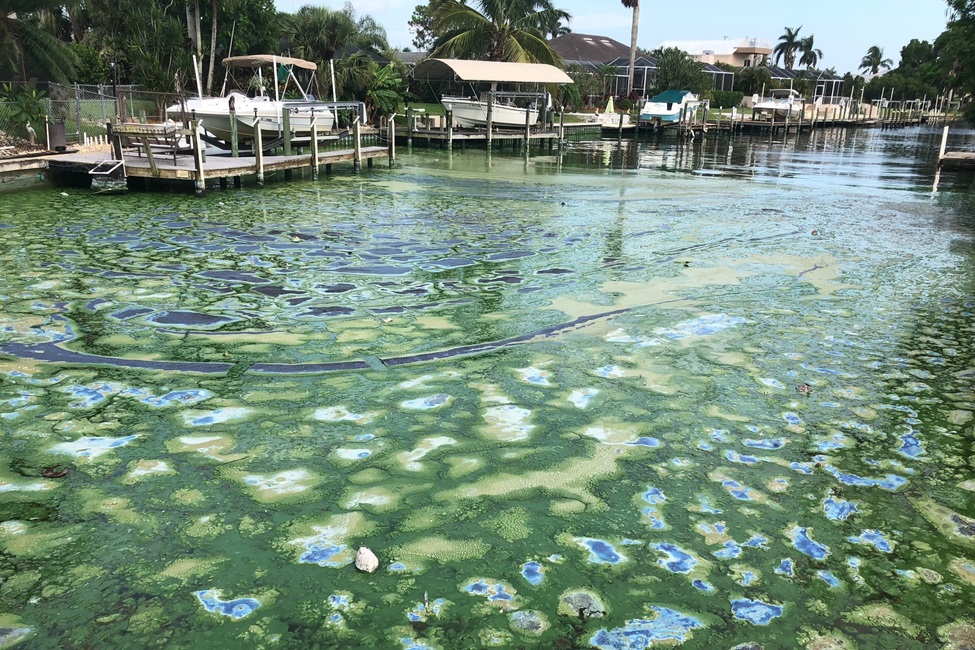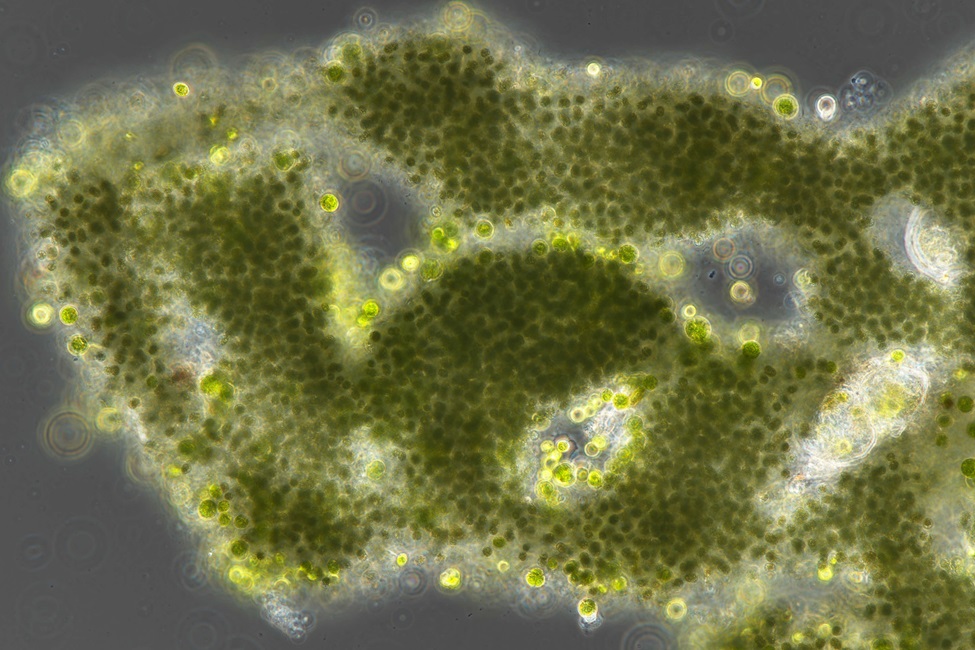By Gisele Galoustian, FAU News Desk
Lake Okeechobee is the largest lake in Florida and the second largest in the Southeastern United States. Over the past two decades, blooms of blue-green algae (Microcystis) have emerged in the lake and have been flushed into nearby urban estuaries, causing serious environmental and public health issues.
Excess nutrients from industries, agriculture and urban development – particularly nitrogen and phosphorus – are well-known causes of harmful algal blooms worldwide. Historically, Lake Okeechobee has only been considered to be impaired for phosphorus, leading to targeted efforts aimed at reducing phosphorus runoff from agricultural sources in the watershed.
Now, new research marks a groundbreaking step in understanding and preserving this crucial ecosystem. Researchers from Florida Atlantic University’s Harbor Branch Oceanographic Institute have conducted the first comprehensive sampling across the Lake Okeechobee Waterway in South Florida, which extends from the St. Lucie Estuary on the east coast to the Caloosahatchee River Estuary on the west coast.

To determine what’s causing recent cyanobacterial blooms, researchers conducted two research cruises across the Lake Okeechobee Waterway and three sampling events of these blooms. They measured nitrogen isotopes in phytoplankton to see if human waste or fertilizers were involved.
Results of the study, published in the journal Harmful Algae, reveal that combating harmful algal blooms in Lake Okeechobee requires managing both phosphorus and nitrogen, and that human waste played a role in influencing these Microcystis blooms. Findings also underscore the importance of rainfall and extreme rainfall events in driving these big blooms.
Inorganic nitrogen levels were elevated in urbanized estuaries and the Kissimmee River, which extends north through the Kissimmee Chain of Lakes to the greater Orlando area, and its water flows into Lake Okeechobee. Furthermore, the expanding urbanization in Orlando was identified as a contributing factor to the increasing prevalence of these blooms in Lake Okeechobee.
“Based on our study findings, strategies focused only on reducing phosphorus aren’t sufficient,” said Brian Lapointe, Ph.D., senior author and a research professor at FAU Harbor Branch. “To tackle toxic cyanobacterial blooms, we need to cut back on both nitrogen and phosphorus. Managing both nutrients is crucial because of their combined impact, which often lead to more severe and persistent harmful algal blooms. In urban areas like the St. Lucie and Caloosahatchee River watersheds, human waste is a major source of these nutrients.”
Findings show key changes in Lake Okeechobee’s algal conditions over the years. Nitrogen-to-phosphorus ratios, microcystins and Microcystis cell counts in the lake are now higher than in previous decades. Phosphorus levels increased from 50 micrograms per liter in the mid-1970s to more than 100 micrograms per liter by the late 1990s. This rise in phosphorus supported the growth of harmful cyanobacteria like Dolichospermum, which began to outcompete other algae.
Sampling occurred from 2018 to 2021 and the cruises took place in 2019 and 2020. This approach provided a detailed, unified snapshot of conditions throughout the entire waterway at a single point in time or over a defined period, rather than isolated or sporadic sampling.
After the hurricanes of 2004-05, which led to significant losses in aquatic plants and fish, toxic Microcystis became more dominant in the lake during the warm, wet season from May to October. Similar major blooms occurred during 2013, 2016 and 2018. Because the research cruises took place in 2019 and 2020, which were relatively dry years, researchers did not observe any major Microcystis blooms in the St. Lucie or Caloosahatchee estuaries.

“It is during these rainfall events when major nitrogen loading occurs, which we now realize happened in 2013, 2016 and 2018,” said Lapointe. “Big blooms appeared in the lake and estuaries following these extreme rain events.”
Findings also show that the higher nutrients in the urbanized Caloosahatchee River Estuary and St. Lucie Estuary enhanced bloom formations in those locations. The nutrients – ammonium, nitrate and phosphate – are highly reactive, which is why the researchers observed thick “scum” on the water’s surface in those estuaries.
“When water and Microcystis is released from Lake Okeechobee into the estuaries, the growth response is like ‘Miracle Grow,’” said Lapointe. “We found the highest concentrations of ammonium, nitrate and phosphate in the estuaries. These nutrients are commonly associated with human waste. Specifically, we observed elevated nitrogen isotope levels, indicating that human waste is a significant source of this nitrogen.”
Researchers also found significant variation in water conditions across different locations, affecting the spread and intensity of algal blooms. The biggest blooms were observed in the Pahokee Marina and Cape Coral, which were strongly affected by human waste.
“Evidence from the Florida Keys shows similar trends of nitrogen enrichment, and our research indicates that such changes may be happening throughout the entire watershed,” said Lapointe.
Previously, water from the Lake Okeechobee watershed naturally flowed southward through the Everglades. However, changes to the water management system led to the creation of the Lake Okeechobee Waterway, which redirects lake water periodically. It is channeled eastward into the St. Lucie Estuary via the C-44 canal and westward into the Caloosahatchee River and Estuary through the C-43 canal.
“Microcystis blooms and their toxicity in Lake Okeechobee and the St. Lucie Estuary are influenced by nitrogen levels, and our study shows that nitrogen enrichment is increasing. It’s crucial to reduce nitrogen to control harmful algal blooms along the lake’s waterway and in the estuaries downstream,” said Rachel Brewton, Ph.D., co-author and an assistant research professor at FAU Harbor Branch. “Given the high nitrogen load from the Upper Kissimmee River, cutting these inputs should be a top priority. Although Lake Okeechobee doesn’t have a Total Maximum Daily Load established for nitrogen as it does for phosphorus, the St. Lucie and Caloosahatchee estuaries do, and recent plans for the lake’s tributaries aim to address nitrogen reductions.”

The impact of these blooms varies based on the size of the watersheds and the specific conditions of the receiving waters, such as their hydrology and chemistry.
“In the lab, we measured chlorophyll a, microcystins, and amounts of Microcystis and other phytoplankton by analyzing their cell concentrations and pigments in water samples,” said Malcolm McFarland, Ph.D., co-author and an associate research professor at FAU Harbor Branch. “We used flow cytometry on water samples on board the research vessels to allow for analysis of live algal cells and avoid losses caused by preservation and storage.”
Large lakes, rivers, estuaries and coastal areas are increasingly affected by these blooms, raising concerns that the growing frequency of harmful algal blooms and their associated toxins could further threaten drinking water supplies, recreational activities, tourism and fisheries in the future.
“These blooms don’t only impact Florida’s vital water resources but also have national implications for public health, environmental quality and economic well-being,” said Lapointe. “Understanding these changes helps us address the challenges of safeguarding our waters and ensures clean, safe water for communities across the country.”
This research supports the need for improved wastewater treatment and water storage north of Lake Okeechobee including the Lake Okeechobee Watershed Restoration Project and the Lake Okeechobee Component A Reservoir project spearheaded by the South Florida Water Management District.
Study co-author is Nicole Stockley, a former research engineer at FAU Harbor Branch.
This research was funded by the U.S. National Aeronautics and Space Administration (NASA) Water Resources Program (80NSSC19K1200). Additional support for this research was provided by the Florida Center for Coastal and Human Health, which was developed with a grant from and funded by the Harbor Branch Oceanographic Institute Foundation.
Banner image: Brian Lapointe, Ph.D., collects samples from the Caloosahatchee River Estuary during a Microcystis bloom at North Shore Park in North Fort Myers in July 2018. (Photo credit: Brian Cousin). This piece was originally published at https://www.fau.edu/newsdesk/articles/lake-okeechobee-harmful-algae-study.php.
Sign up for The Invading Sea newsletter by visiting here. If you are interested in submitting an opinion piece to The Invading Sea, email Editor Nathan Crabbe at ncrabbe@fau.edu.



